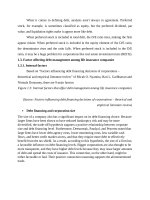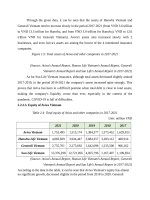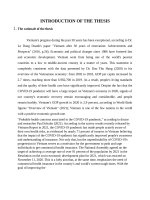What i have studied from school 0024
Bạn đang xem bản rút gọn của tài liệu. Xem và tải ngay bản đầy đủ của tài liệu tại đây (27.14 KB, 2 trang )
at the expense of debt holders. Manipulation like this raises debt financing agency
expenses and lowers debt financing levels (Deesomsak et al., 2004).
•
Non-debt tax shield
Non-debt tax shields are elements other than interest expenditures that contribute
to lower tax payments, such as the tax deduction for depreciation and provision for bad
debts. Corporations with non-debt tax shelters are less likely to fully utilize the debt tax
shelter provided by debt interests. To put it another way, companies that have enough tax
credits from investments or depreciation deductions are less inclined to use debt
financing. The idea is that non-debt tax shelters can be used in place of debt-related tax
shelters. As a result, there should be a negative link between non-debt tax shelters and
debt financing.
•
Probability of bankruptcy
Because a higher risk of bankruptcy entails a higher cost of bankruptcy, the trade-
off theory predicts a negative link between risk of bankruptcy and debt financing (Kayo
and Kimura, 2011). Larger firms, on the other hand, are more diversified and have a more
predictable cash flow. As a result, the likelihood of a large company going bankrupt is
lower than that of a small one. Larger profitable enterprises, according to the pecking
order concept, should spend more of their internally produced money, decreasing debt
financing levels. According to the pecking order concept, huge firms with a lower risk of
insolvency can have lower debt financing levels.
1.3.2. External factors (Macro environment)
Macroeconomic variables are regional or national economic factors that impact
corporate financial strategy, particularly debt financing decisions, from the outside. The
literature on financial management emphasizes the importance of macroeconomic
conditions in determining a firm's capital structure decisions. The gross domestic product
(GDP), inflation rate, interest rate, financial institution activities, and industry median are
all frequent macroeconomic factors that impact corporate debt financing decisions,
according to recent and previous literature. Corporations' debt financing decisions are
influenced by the macroeconomic factors listed below.









